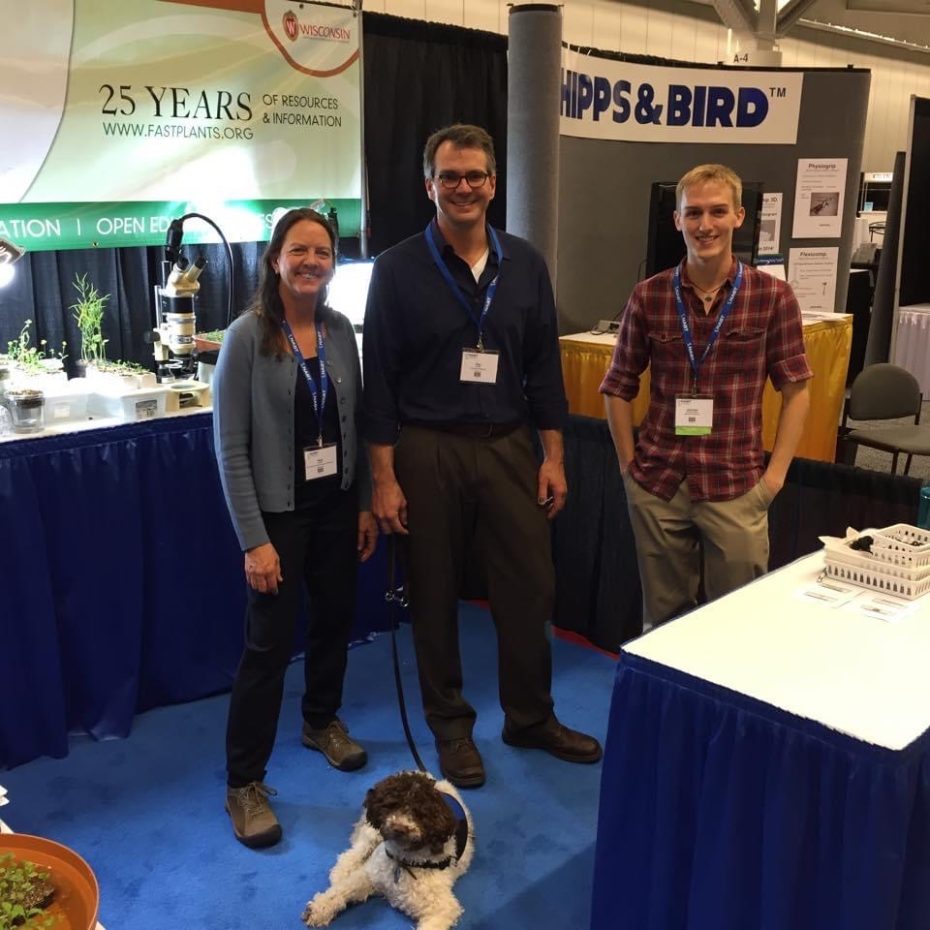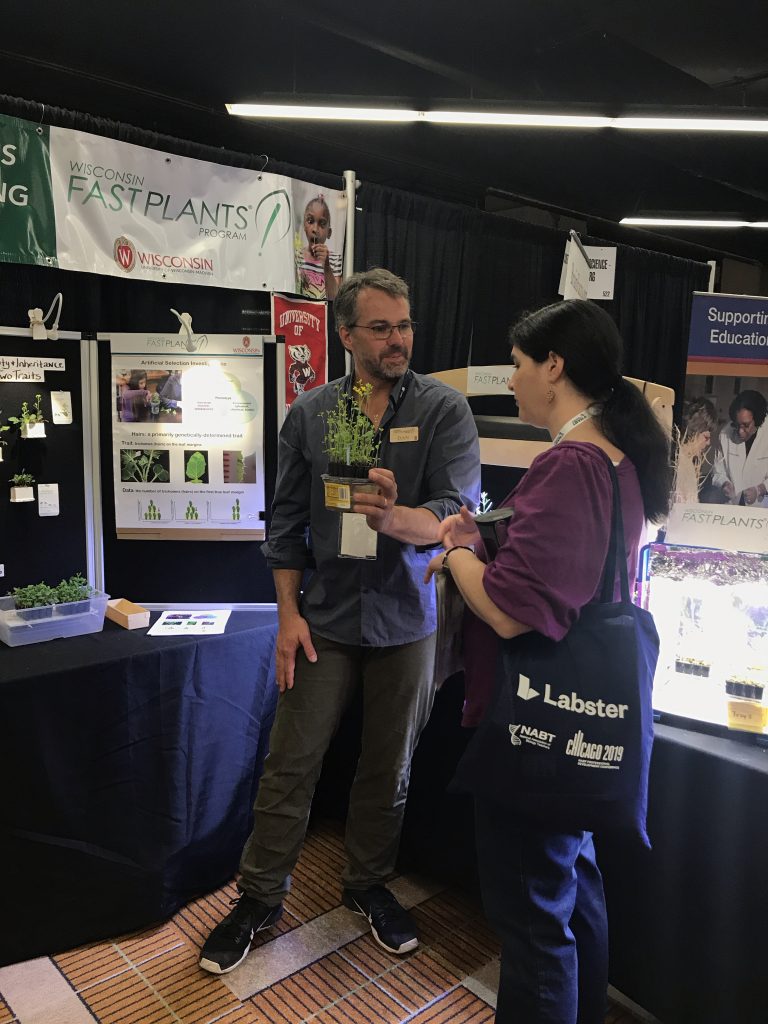
It’s the season of professional development conferences for teachers, educators, and our Fast Plants Team! Come visit our booths in the exhibit halls, they’re always packed with living Fast Plants, recommended resources, and good conversation. Jackson is attending NABT in Baltimore; Hedi and Dan are attending CAST in Houston and ACTE in Phoenix!
This blog post summarizes what you’ll find in our booths at Fast Plants conferences, including links to related and recommended resources.
- Life cycle: Living examples of key stages in the Fast Plants life cycle.
- Genetics, inheritance, and selection! Seedling and flowering stages of the primary Fast Plants genetic varieties and seedlings expressing the Polycot trait, used in selection experiments.
- Effects from limiting (and exceeding) various environmental variables! Examples of observable variation among small Fast Plants populations grown under variable light, fertilizer, and density.
- Growing systems: A variety of do-it-yourself and kit-available growing systems.
- Lighting systems: Several optimal lighting options for growing Fast Plants.
Life cycle displays
Showcasing plants that illustrate the Fast Plants life cycle explains why they’re called “fast!” and leads to good conversations about growing healthy Fast Plants. The following are links to resources helpful for teaching throughout the Fast Plants life cycle.

- Open Source Life Cycle investigation lesson plans developed in the Gather, Reason, and Communicate instructional model.
- Fast Plants YouTube video playlist with time-lapse and other life cycle related videos.
- Blog post with teaching options for any grade level while growing Fast Plants through their life cycle.
- General growing info in this bog post: Three mistakes to avoid for growing healthy Fast Plants.
- Comprehensive blog post series about the primary physical, biological, and chemical environmental factors that affect Fast Plants throughout their life cycle.
Genetics and inheritance displays
Many options for teaching hands-on genetics with Fast Plants evolved over the 35+ years that Fast Plants have been in classrooms. In our booth, we show seedlings germinated in Petri dishes AND growing in soil-less seedling starter mix.
After just 3-5 days, seedlings are old enough to be scored for evidence of either monohybrid or dihybrid Mendelian inheritance patterns. Alternatively, students can grow Fast Plants in soil, inter-mate the F1 generation, then observe firsthand the results in the F2 offspring seeds they produced themselves!
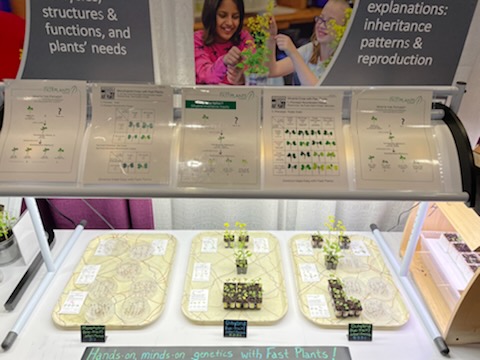
The following are recommended resources that support teaching genetics with Fast Plants:
- Fast Plants YouTube video explaining the phenotypes, genotypes, and procedures for teaching Mendelian Genetics with the Fast Plants seed disks.
- Genetics investigation calendar, with three options for teaching inheritance over different time frames, using either plants grown in soil or seedlings germinated in Petri dishes
- Open Source Genetics investigation lesson plans designed in the Gather, Research, Communicate format. Includes data analysis prompts derived from Ambitious Science Teaching discourse cues, student pages, and sample student work.
- Fast Plants YouTube video that concisely explains the phenotypes and genotypes involved in teaching Mendelian Genetics. This video features the Fast Plants Purple Stem crossed with Non Purple Stem seed varieties.
- This Fast Plants YouTube video explains how to teach dihybrid inheritance with Fast Plants.
- Infographic overview of the “Who’s the Father?” investigation with Fast Plants.
- Classic Fast Plants “Who’s the Father?” lesson plans in PDF format for both monohybrid and dihybrid inquiries.
Polycot seed stock for teaching variation and selection
Polycots are a fantastic model for teaching about the relationships between variation and artificial selection. Using Polycots, students can selectively breed those Fast Plants expressing the polycot trait (three or more cotyledons, or seed leaves) and increase polycot frequency in future generations. Resources related to teaching with Polycots include:
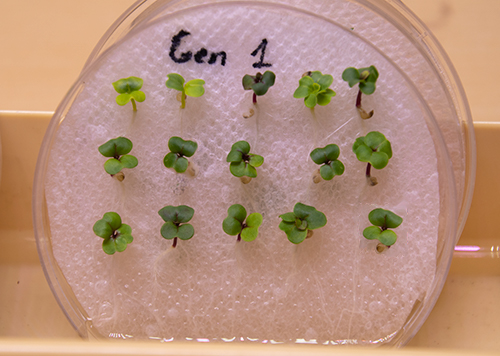
- Polycot investigation calendar, with three options for teaching selection over different time frames
- Polycot webinar recording, including data analysis explained by Dr. Claudia Solis-Lemus, using the Wisconsin Fast Stats App.
- Polycots blog post with Open Source lesson for teaching selection with Polycots and other resources.
- Open Source Polycot investigation lesson plans with teacher and student resources.
Effects from limiting a variety of environmental variables
We share living samples of Fast Plants grown in experimental environmental conditions as examples for you to build upon with your students. The following two resources are samples of what our Program has to offer in support of teaching ecological, environmental, and agricultural sciences with Fast Plants:
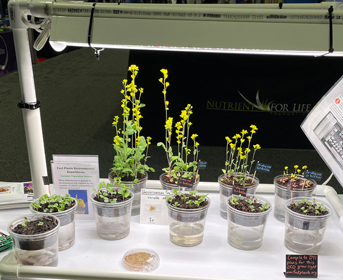
- Open Source Ecology investigation lesson plans in the Gather, Reason, and Communicate format.
Growing Systems for Fast Plants
Designing simple hydroponic growing systems for Fast Plants is a great example of how engineering and scientific practices complement each other. Information about recommended systems is available on our website’s Preparation Page and on our YouTube channel:
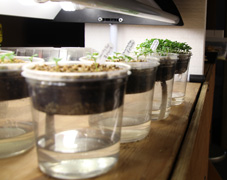
- Start here: This Fast Plants video offers an overview of three recommended growing systems.
- Additional videos in a YouTube playlist show planting procedures specific to those growing systems.
Lighting Systems for Fast Plants
Learn about optimizing lighting for growing Fast Plants in this helpful article.
Check out our blog post on LED grow lights to learn about recommended lighting for Fast Plants, and then try out phone apps that make it possible to measure light output available for photosynthesis. This post contains complete plans (including a shopping list) for building your own Fast Plants lighting system with PVC and GE LED grow lights.
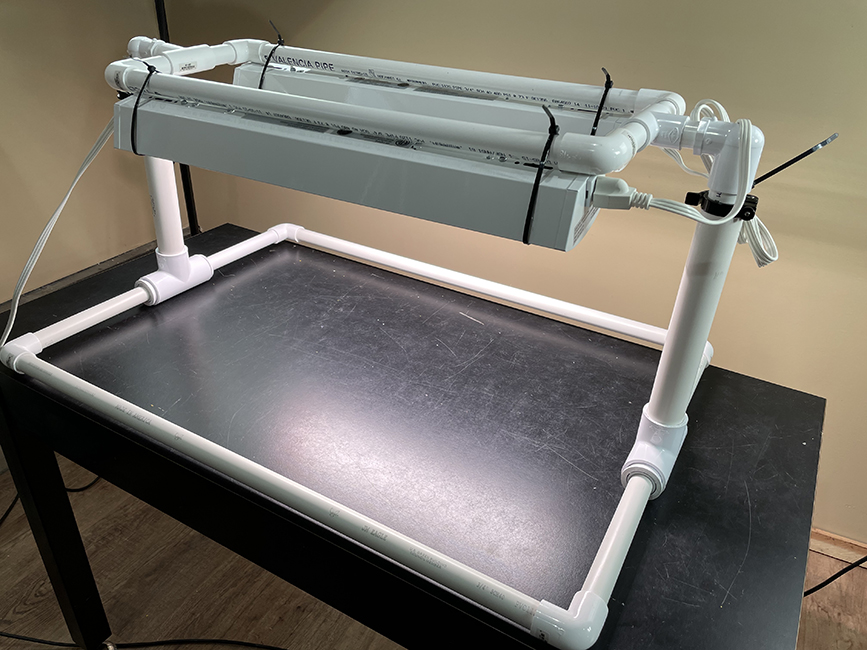
We know that our booths at Fast Plants Conferences are packed with information. They’re also situated in a busy exhibit hall amongst a flurry of workshops and sessions. So, we hope this post can provide follow-up information to reference after returning from a conference. In addition, you can contact us on our website, or email for one-on-one advice whenever needed (info@fastplants.org).
If you visited our booth at NABT, CAST, or ACTE, we thank you for making the time to do so! If you weren’t able to travel this year, then we’ll hope to see you at another conference, soon. We’ll be attending the NSTA National Conference in Denver in March 2024.

